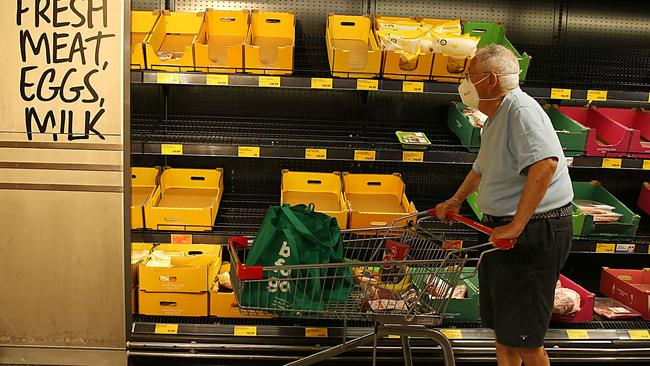Inflationary pressure: Is Australia losing food security?
First, it was the pandemic which hit the supermarkets. Now, input costs are squeezing Australia’s ability to supply affordable food to its people.
Having to choose between paying bills or feeding your family isn’t a narrative many of us associate with modern Australia, a nation often heralded as a bountiful food basket.
But mounting input pressures for primary producers means the nation’s ability to produce affordable food is being squeezed.
Adding complexity to the food pricing issue, Prime Minister Anthony Albanese recently made a submission to the Fair Work Commission, calling for a 5.1 per cent increase to the national minimum wage.

It comes as southern states were warned of potential gas shortages, as wholesale electricity prices rise, while the official interest rate is set to rise to 0.85 per cent.
Victorian Farmers Federation chicken-meat president Colin Peel told The Weekly Times earlier this month he was paying about 60c/litre for LPG, up from 40c/litre 12 months ago.
And there are fears it could rise to 80c/litre.
Mr Peel, a chicken-meat producer and grain grower from near Geelong, said farmers were carrying the costs of increased inputs.
“We may be able to reclaim some of that in our contracts going forward … but that doesn’t help you in the current situation,” Mr Peel said.
“It gets reflected back into the contract price that’s paid for chicken, and they have to pass it on down the track.”
But balancing the dual pressures of ensuring farmers are paid a fair price, while ensuring Australian can afford to eat is a complex act, according to University of Melbourne senior lecturer in food systems Rachel Carey.
Dr Carey said it was important to understand the range of pressures affecting food prices has been mounting for 12 months or longer.
“And of course that creates a very difficult situation for consumers and for farmers,” Dr Carey said.
“Farmers are facing rising costs and needing to take measures to cope with that, so we honestly have to be mindful of the impact that we’re having on consumers.
“This has been a growing problem, and the number of people seeking emergency food relief has been rising … and we can expect that to rise further given the increase in food prices and cost of living issues.”
Packaging company Visy chairman Anthony Pratt highlighted Australia’s responsibility to help feed the world in a “chaotic and ambiguous world” post-Ukraine invasion, speaking at the recent Global Food Forum.
“This is all forcing a big shock on the global food system,” Mr Pratt said, adding that a pending global shortage of wheat flour and bread “risks social unrest, like the Arab Spring”, referencing the period of political instability in the Middle East and North Africa in 2010-11.
“Fortunately, Australia happens to be one of the world’s biggest food baskets. 10 years ago, I said Australia had a responsibility to help feed the world … that time has come,” Mr Pratt said.
But tackling a mounting food insecurity problem at home may become a more pressing issue in coming months.
Dr Carey said food insecurity not only meant a shortage of food, but access to food, which can be hampered by a lack of income or being priced-out of the food market.
“Then we’ve got farmers who clearly need to make a viable living and that has been a struggle for many with the downward pressure on food prices recently. And then of course, we have the livelihoods of people all the way through the food supply chain, who are often some of the most lowest case, insecure workers.”
Dr Carey said bringing down food prices was not the answer to tackling food affordability.





